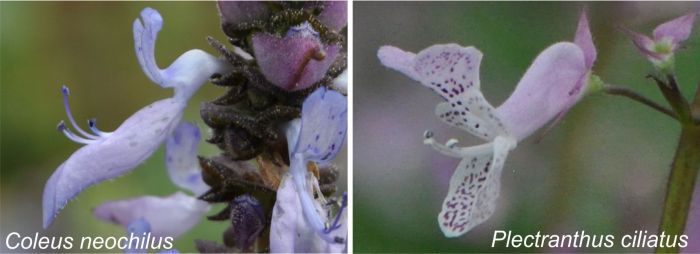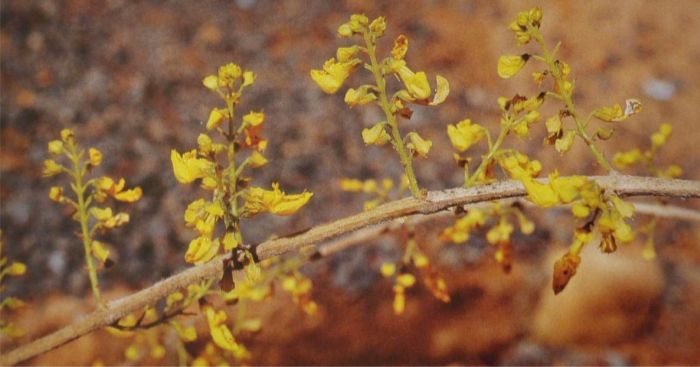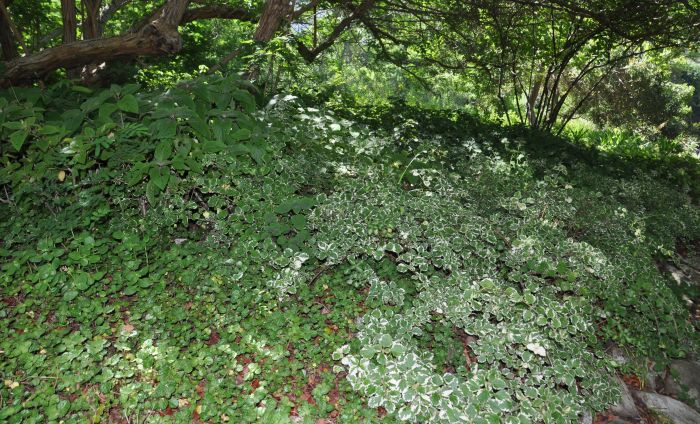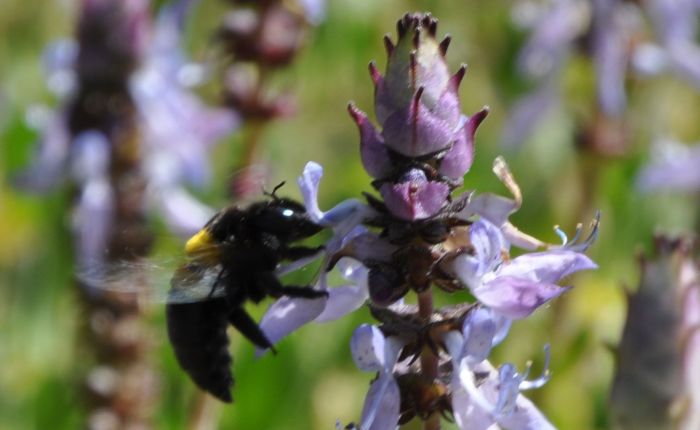Coleus genus
Coleus Lour.
Family: Lamiaceae
Common names: coleus
Introduction
For many years, the plant we’ve known as coleus, was the popular garden plant with multi-coloured leaves, although its accepted scientific name was Plectranthus scutellarioides, but it was also known by its previous names Solenostemon scutellarioides and Coleus scutellarioides, and it kept the Coleus for its common name. All very confusing, because it belongs in a problematic group, and the name changes reflect the shifts in botanist’s knowledge and understanding of the group, as they found new species and learned more about them. Now, molecular studies, using the DNA of these plants, have brought clarity and definition to this group.

These molecular studies by Paton et al. (2019) showed that the old definition of the genus Plectranthus does not have a single common ancestor, and that it contains a distinct clade that includes the type species of the former genus Coleus. Furthermore, the remaining, or ‘non coleus’ members of Plectranthus are more closely related to the sister genera Tetradenia and Thorncroftia than they are to the ‘coleus clade’. As a result, the old genus Coleus is now re-instated and Plectranthus is redefined, and, therefore, Plectranthus scutellarioides is now Coleus scutellarioides again.
The studies also show that the genera Pycnostachys, Anisochilus and Leocus are nested inside the ‘coleus clade’ and have, therefore, been sunk into Coleus. And there is another distinct clade within the old Plectranthus, that is now the newly described genus Equilabium. The genus Solenostemon is no longer recognised.
There are currently 294 species of Coleus, 72 species of Plectranthus and 42 species of Equilabium that are recognised.

Description
Description
Coleus is a genus of annual or perennial herbs or shrubs, sometimes with succulent leaves and stems, and sometimes with a swollen rootstock. Leaves are opposite, sometimes whorled. The inflorescence is variable, from congested to lax, single- to multi-flowered, simple or branched, and the flowers may be sessile or with a pedicel. The flower has a funnel-shaped to tubular calyx that can be straight or curved, and is 2-lipped to regularly 5-lobed. A diagnostic feature is that the pedicel attaches asymmetrically to the base of the calyx, and not in the centre. The corolla is 2-lipped. Another diagnostic feature is that the posterior (upper) lip is shorter than the anterior (lower) lip. The corolla tube is sigmoid (bent like an S-shape) to almost straight, narrow and parallel-sided at the base, widening towards the mouth, and very rarely with gibbosities (swellings at the base or on one side). The posterior (upper) lip is 4-lobed, erect or ascending and the anterior (lower) lip is horizontal and hood-shaped to concave. The flowers contain 4 stamens, the filaments are fused or free and can be inside the lower lip or protruding beyond it. The style is divided into 2 lobes. Seed is an ovoid nutlet, often slightly flattened.
In the old literature, Coleus and Plectranthus were separated on the basis of the stamens being fused (Coleus), or free to the base (Plectranthus), but when it was realised that this is not a reliable character, Coleus was merged into Plectranthus. The name Coleus is derived from the Greek koleos, meaning ‘a sheath’, and refers to the fused stamens.

In the current definition, Plectranthus and Coleus can be told apart as follows:
In Coleus the pedicel attaches asymmetrically, above the midline of the calyx, in Plectranthus it attaches at the centre of the calyx base.
In Coleus the corolla lips are unequal, the anterior (upper) lip is much shorter than the posterior (lower) lip, and in Plectranthus they are of roughly equal length. In Coleus the corolla tube is usually bent in an S-shape, but in Plectranthus it is straight or curved downwards.
In Coleus the corolla tube rarely has a basal swelling, whereas in Plectranthus the corolla tube usually has a swelling at the base.
Conservation Status
Status
There are 29 species of Coleus occurring naturally in South Africa. Most of them are not threatened and consequently are assessed as Least Concern (LC). There are 5 species that are of conservation concern: C. venteri is Rare, but not threatened; C. porcatus is Vulnerable (VU) because it is harvested for medicinal purposes, and its habitat is at risk from mining; C. psammophilus is Endangered (EN) because of habitat loss caused by agricultural expansion, overgrazing and invasive alien plants in its habitat; and for 2 species, C. esculentus and C. pentheri, more data is needed to complete their assessments.

Distribution and habitat
Distribution description
There are currently 294 accepted species of Coleus, they occur in the Old World tropics and subtropics and have been spread to other parts of the world through cultivation. There are 29 species that are indigenous in South Africa where they are found in southeastern and eastern parts, in the Eastern Cape, KwaZulu-Natal, Mpumalanga, Gauteng, Limpopo and North West Provinces. Coleus are also found in Eswatini, Mozambique, Zimbabwe, Botswana, Namibia, Angola and northwards to Kenya and Ethiopia, and in Madagascar and on other Indian Ocean islands, the Arabian Peninsula, India, Asia and Australia. Several species, including C. barbatus, C. rotundifolius, C. scutellarioides and C. comosus (= Plectranthus ornatus) have been introduced in South Africa and are widely cultivated, and C. barbatus and C. comosus (= Plectranthus ornatus) have naturalised here and C. barbatus var. grandis is a declared Category 1b invasive weed.
Coleus are found in the summer-rainfall region of South Africa, mostly where frost is absent or light, in savanna, thicket vegetation, grassland, woodland, forest margins, coastal forest, afromontane forest, afrotemperate forest, often among rocks, on cliff faces, mostly in full sun, semi-shade or light shade, some in full shade.
Coleus amboinicus (African thyme) is a well known kitchen herb, and C. neochilus (smelly coleus) is a widely grown garden ornamental, famous for being able to grow almost anywhere, except in cold climates. Other species covered in this series are: C. esculentus (African potato/veld potato), C. grandidentatus (big-teeth coleus), C. hadiensis (hairy coleus), C. madagascariensis (thicket coleus), C. tenuicaulis (Angolan coleus), C. venteri (Sekukuni coleus), C. kirkii (prickly sage) and C. livingstonei (hedgehog sage).
See the full list of South African species of Coleus.

Ecology
Ecology
Coleus are fast-growing plants, often with a spreading or trailing habit and the ability to root as they grow, where their branches touch the ground. This allows them to quickly take advantage of favourable conditions, and to move into favourable positions. It also allows them to survive being trampled and/or grazed by various animals, where the broken-off branches can root and develop into independent plants.
Many are succulent or semi-succulent, which enables them to survive periods of drought. Broken-off branches of the succulent species can also survive for a long time until rain falls and they can form roots. Some also have tuberous roots, which enables them to survive droughts, and frost or heavy grazing. Fragments of a tuber that become detached, can also root and form a new plant.

Many contain aromatic chemical compounds that deter grazing insects, and some species e.g. C. neochilus and C. venteri are even used by people to repel insects, such as flies or mosquitoes.
Coleus flowers are pollinated by insects that feed on the pollen and nectar, such as bees, butterflies, carpenter bees and flies. The shape, length and colour of the flower tube influences which insects are attracted. Seeds are small, smooth nutlets inside the dried calyx, which are either shaken out and disperse around the mother plant, or detach from the plant and are carried off by wind or passing animals.

Uses
Use
Many species of Coleus are used as medicines to treat a range of ailments, particularly chest, stomach and skin complaints, and some are used as food, or to flavour food, or as feed for stock animals. The most frequently used for medicine and flavouring are C. amboinicus and C. barbatus, and C. esculentus, known as African potato or veld potato, is a well known and widely grown food plant, its starchy tuberous roots are cooked and eaten like a potato.

Growing Coleus genus
Grow
Coleus are easy to grow, rewarding, undemanding, low maintenance, often aromatic, garden plants, usually scrambling groundcovers. Some prefer semi-shade, some full sun or light shade. Most are sensitive to frost, some can take mild frost. They are suitable for containers. They are easy to propagate from cuttings, or seed. Cuttings can be taken in spring or summer, and can be rooted in sand, or in situ, without the need for rooting hormone or a mist unit. Because cuttings are so easy, most gardeners do not bother propagating them from seed. Seeds can be harvested from dried or drying inflorescences, stored cool and dry and sown in spring or summer.
References
- Alien Invasive Plants List for South Africa. https://www.environment.co.za/weeds-invaders-alien-vegetation/alien-invasive-plants-list-for-south-africa.html. Updated 2019-02-13
- Jackson, W.P.U. 1990. Origins and meanings of names of South African plant genera. University of Cape Town.
- Lukhoba, C.W., Simmonds, M.S.J. & Paton, A.J. 2006. Plectranthus: a review of ethnobotanical uses. Journal of Ethnopharmacology 103(1): 1–24.
- Paton, A.J., Mwanyambo, M., Govaerts, R.H.A., Smitha, K., Suddee, S., Phillipson, P.B., Wilson, T.C., Forster, P. I. & Culham, A. 2019. Coleus and Plectranthus (Lamiaceae): a tale of more than two genera. Phytokeys 129: 1–158.
- Van Jaarsveld, E. 2006. The southern African Plectranthus and the art of turning shade to glade. Fernwood Press, Vlaeberg, Cape Town.
Credits
Alice Notten
Kirstenbosch National Botanical Garden
June 2020
Plant Attributes:
Plant Type:
SA Distribution:
Soil type:
Flowering season:
PH:
Flower colour:
Aspect:
Gardening skill:
Special Features:
Horticultural zones






Rate this article
Article well written and informative
Rate this plant
Is this an interesting plant?
Login to add your Comment
Back to topNot registered yet? Click here to register.